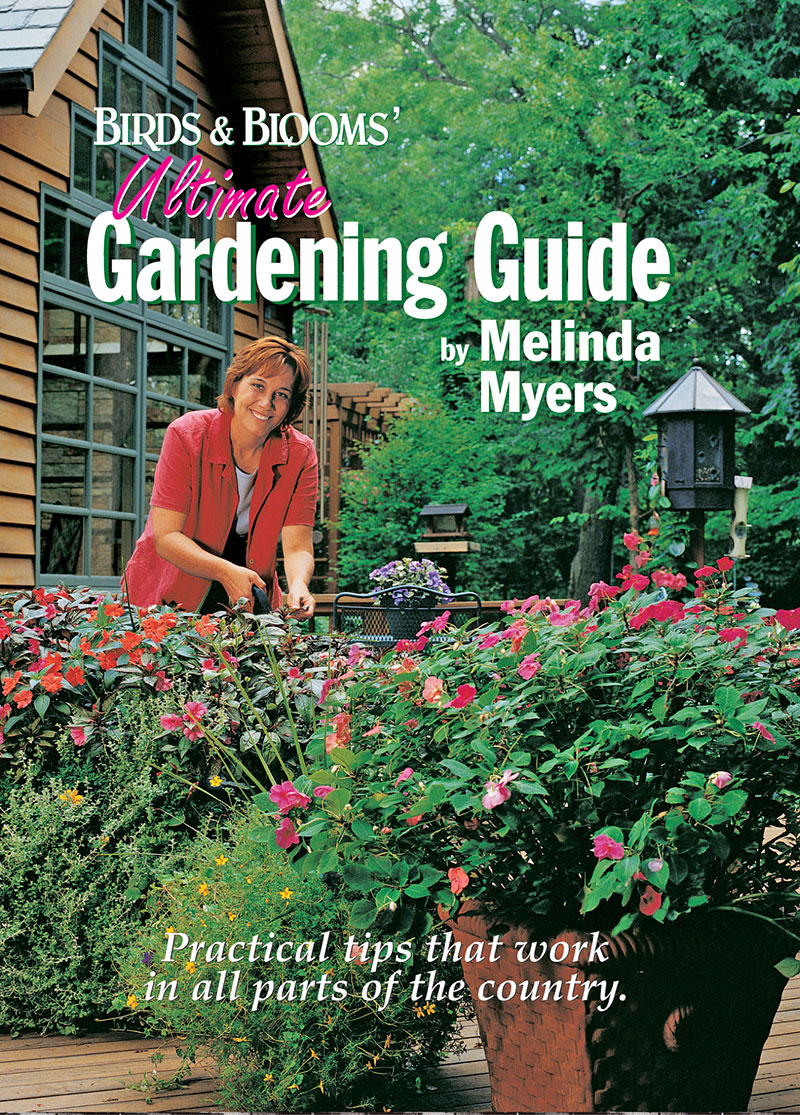January
Flowers & Ornamental Grasses
Flowers & Ornamental Grasses
- Start a garden journal to record new plants added to the landscape, successes, challenges and extreme weather conditions. Include any other information that will help in future planning and maintenance of your landscape.
- Water containers overwintered in an unheated garage or mulched in above ground whenever the soil is thawed and dry. Or shovel a scoop of salt-free snow on the pot to water the soil as it melts.
- Start planning for new additions to your flowerbeds. Review pictures of your garden and notes in your journal to help with planning.
- Inventory leftover seeds, create a list of additional seeds you want to purchase, and place your order early for the greatest selection.
- Gather then purchase any containers, sterile seed starting mix, seeds, lights and other equipment needed for starting your own plants from seeds indoors.
- Create a seeding chart for recording plant names, starting dates and other important information. This will help you stay on schedule for planting indoors and out.
- Eliminate the need for lights and daily watering with winter sowing. Start seeds of cool weather annual flowers and vegetables as well as hardy perennials with this method.
- Check on dahlias, cannas and any other bulbs overwintering indoors. Discard any soft, discolored or rotting bulbs. Move sprouted bulbs to a cooler, dark location.
- Southern gardeners can start planting seeds of cool weather herbs, vegetables, annual flowers and perennials indoors. Check seed packets for timing and growing tips.
- Southern gardeners can start planting alyssum, larkspur and California, Iceland and Shirley poppy seeds directly in the garden as soon as the soil can be worked.
- Plant pre-cooled tulip and daffodil bulbs in a prepared garden or container when the soil is moist, but not wet.
- Continue to minimize salt damage to plants by shoveling first and then applying a plant-friendly deicing salt to walks and drives.
- Recycle your Christmas tree and greens in your landscape. Prune branches off the tree and use the greens for a winter mulch.
- Check for tracks and other signs of vole damage in your perennial gardens and mixed borders. These critters, also called meadow mice, may start nibbling on fleshy roots of perennials like daylily, Siberian iris, and hosta.
Fruits, Vegetables & Herbs
Fruits, Vegetables & Herbs
- Make this the year you start a garden journal. Track plant additions, successes, failures and weather extremes. Include any information that will help in future planning and maintenance of your landscape.
- Add a little zip and nutrition to your winter meals with homegrown microgreens.
- Start a windowsill herb garden in a sunny window or under artificial lights.
- Harvest herbs as needed for cooking. Cut back leggy plants to a set of healthy leaves to encourage new growth. Use trimmings to season your favorite dishes.
- Inventory leftover seeds, check catalogues for new and favorite varieties, create a list of seeds you want to purchase, and place your order early for the greatest selection.
- Gather and purchase any supplies and equipment you’ll need for starting plants from seeds indoors.
- Create a seeding chart for recording plant names, starting dates and other important information. This will help you stay on schedule for planting indoors and out.
- Eliminate the need for lights and daily watering with winter sowing. Start seeds of cool weather vegetables and hardy fruit plants with this method.
- Southern gardeners can start planting seeds of herbs, vegetables, and strawberries indoors. Check seed packets for timing and growing tips.
- Gardeners in colder regions should check winter mulches on strawberries. Replace any that were dislodged by bad weather.
Groundcovers & Vines
Groundcovers & Vines
- Identify areas in the landscape that would benefit from some vertical interest. Look for vines that provide multiple seasons of interest and are suited to the space and growing conditions.
- Check vines, trellises, and arbors and make sure they are securely mounted despite wind, heavy snow or ice.
- Use branches from your discarded Christmas tree or greens as mulch to protect evergreen groundcovers like pachysandra and European ginger from winter winds and sunburn.
- Manage tropical vines moved indoors for winter as you would your other indoor plants.
- Check on vines overwintered in the garage and water whenever the soil is thawed and dry.
Indoor & Holiday Plants
Indoor & Holiday Plants
- Recycle your Christmas tree into the landscape. Leave it intact and use as a windbreak and shelter for birds or remove branches and use as winter mulch for perennials and bulbs.
- Enjoy your poinsettias and other holiday plants throughout the winter with proper post-holiday care.
- Once forced bulbs are done flowering, you can grow them like a houseplant. Then move the forced bulbs into the garden after the danger of frost has passed.
- Plant your amaryllis bulb in a container slightly larger than the bulb with the pointed half above the potting mix.
- Plant cat grass for your favorite kitty to enjoy, so they will hopefully leave your houseplants alone.
- Yellow leaves on houseplants may mean it is time to adjust your watering schedule.
- Check the upper and lower leaf surfaces and along the stem of indoor plants for signs of mites, aphids, mealy bugs and scale.
- Fungus gnats, often mistaken for fruit flies, are occasionally found flitting throughout the house in the winter months. They don't hurt your houseplants, but can be a nuisance.
- Keep indoor plants away from drafts of hot air from heating vents or cold air from windows and patio doors.
- Leach the soil of your indoor plants to eliminate the white crusty salt build up on containers that can damage your indoor plants.
- Clean houseplants once a month. Wipe off smooth leaves with a damp sponge or cloth. Use a cosmetic brush to dust African Violets, Gloxinias and other hairy-leafed plants.
Lawns
Lawns
- Continue to shovel snow first and then use a plant- and pet-friendly deicing salt as needed. You’ll use less deicing salt and reduce salt damage to your lawn and landscape plants.
- Check for tracks in the lawn caused by vole activity. Make note and plan on repairing any damage in the spring.
- Minimize foot and avoid equipment traffic on dry or frozen grass.
Trees, Shrubs & Roses
Trees, Shrubs & Roses
- Make sure animal fencing is secured, replenish repellents as needed and alternate scare tactics to minimize wildlife damage.
- Water containers overwintered in an unheated garage or mulched in above ground whenever the soil is thawed and dry. Or shovel a scoop of salt-free snow on the pot to water the soil as it melts.
- Protect newly planted evergreens from winter winds and sun with a temporary screen of burlap, snow fence or a discarded Christmas tree.
- Remove and destroy egg masses of harmful insects, like tent caterpillars, gypsy and tussock moth. Prune out black knot and other cankers, disinfecting your tools between cuts.
- Check, clean and sharpen hand pruners. Replace any damaged or old blades that can no longer be sharpened.
- Always prune with a purpose and at the best time for the trees and shrubs you are managing. Wait until late spring to prune spring-flowering shrubs.
Categories
Upcoming Live Events
& Webinars
April 27, 2024
Ridges & Rivers Book Festival
Viroqua, WI
Register now
April 28, 2024
Flowering Trees and Shrubs
Ebert's Greenhouse Village, Ixonia, WI
May 1, 2024
FREE WEBINAR
Ornamental Fruits and Vegetables
Register now
May 4, 2024
Garden U 2024
New Richmond, WI
Register now
May 9, 2024
FREE WEBINAR
How to Plant Your Rain Garden
Register now
May 11, 2024
Ask The Plant Doctor Q & A
Ebert's Greenhouse Village, Ixonia, WI
May 12, 2024
Ask The Plant Doctor Q & A
Ebert's Greenhouse Village, Ixonia, WI
May 18, 2024
Ask The Plant Doctor Q & A
Ebert's Greenhouse Village, Ixonia, WI
June 1, 2024
Selecting, Planting, Pruning and Caring for Hydrangeas
Ebert's Greenhouse Village, Ixonia, WI
June 5, 2024
FREE WEBINAR
Under-Appreciated Pollinators
Register now
WATCH ON-DEMAND WEBINARS
Learn More










